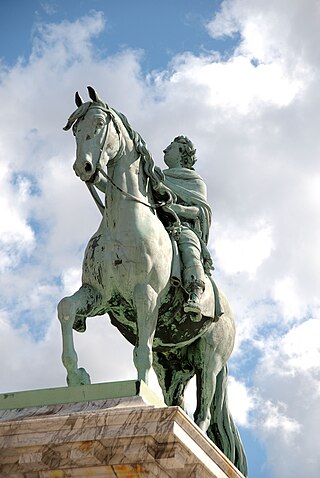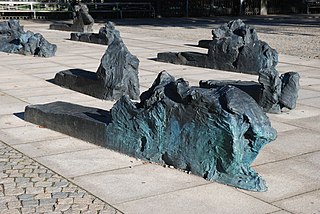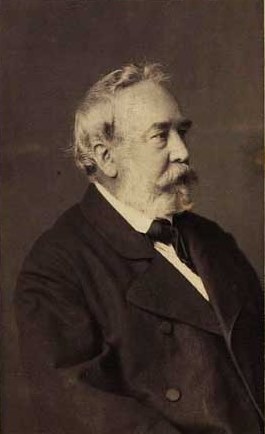Related Research Articles

Martinus Christian Wesseltoft Rørbye was a Danish painter, known both for genre works and landscapes. He was a central figure of the Golden Age of Danish painting during the first half of the 19th century.

Laurits Andersen Ring was one of the foremost Danish painters of the turn of the 20th century, who pioneered both symbolism and social realism in Denmark. Considered one of the masterpieces of Danish culture, his painting Summer Day by Roskilde Fjord was included in the 2006 Danish Culture Canon.
Lauritz Berg Hartz was a Danish artist, considered to be one of the country's finest colourists.

The Thorvaldsen Medal is awarded annually with few exceptions to a varying number of recipients by the Royal Danish Academy of Fine Arts and is its highest distinction within the visual arts. It is named after the sculptor Bertel Thorvaldsen.

Danish sculpture as a nationally recognized art form can be traced back to 1752 when Jacques Saly was commissioned to execute a statue of King Frederick V of Denmark on horseback. While Bertel Thorvaldsen was undoubtedly the country's most prominent contributor, many other players have produced fine work, especially in the areas of Neoclassicism, Realism, and in Historicism, the latter resulting from growing consciousness of a national identity. More recently, Danish sculpture has been inspired by European trends, especially those from Paris, including Surrealism and Modernism.
Gunnar Aagaard Andersen was a Danish sculptor, painter, designer and architect whose work belongs to the Concrete art movement.
Sonja Ferlov Mancoba was a Danish avant-garde sculptor.

Jørgen Haugen Sørensen was one of Denmark's most eminent sculptors. He had his artistic debut at the acclaimed and prestigious Spring Exhibition (Forårsudstillingen) at Kunsthal Charlottenborg, Copenhagen in 1953. Haugen Sørensen was a member of the artistic union Decembristerne and the artist collective Grønningen, as well as Veksølund in Denmark.
Eva Isabel Koch is a Danish sculptor who has gained fame with her video installations. In 2011, she was awarded the Thorvaldsen Medal.
Jørgen Kofoed Rømer was a Danish art historian, graphic artist and painter.
Erik Thommesen was a Danish sculptor who worked mainly with wood, creating Expressionist representations of the human figure inspired by African sculpture.
Christian Lemmerz is a German-Danish sculptor and visual artist who attended the Accademia di Belle Arti in Carrara, Italy, from 1978 to 1982 and the Royal Danish Academy of Fine Arts from 1983 to 1988. Despite classical sculpture training in Carrara, Lemmerz drew his main inspiration from the post-war process-oriented pop art, not least from his fellow countryman, Joseph Beuys.

Kirsten Møller Ortwed is a Danish artist, now based in Cologne, Germany. She is noted for her striking sculptures in public spaces and her sometimes surprising combinations of traditional and unconventional materials.

Torben Niels Ebbesen is a Danish sculptor and painter. His installations in contrasting materials and other abstract works can be seen in locations in Denmark, Germany and Sweden as well as in several Danish museums.
Stig Brøgger was a Danish artist who worked with sculpture, painting, installations and photography. His aims have been to show how art contributes to man's experience of life and his understanding of the surrounding world.
Thomas Bang is a Danish sculptor who in the 1970s contributed to Conceptual art and Pop art in the United States.
Holger Jens Sophus Jensen was a Danish painter.

Viera Collaro is a Slovak-Danish artist whose work in light art relies on the effects of light on colour, space and reflection. In addition to her artworks and installations, since the early 1990s she has decorated a number of Danish buildings including Copenhagen University's South Campus on Amager. In 2002, she was awarded the Eckersberg Medal and in 2015, she received the prestigious Thorvaldsen Medal.
Jytte Høy is a Danish contemporary artist whose installations and sculptures consist of simple, everyday materials and objects. From 1996 to 2007 she served as rector of the Jutland Art Academy in Aarhus.

Carl Edvard Sonne was a Danish printmaker. His work consisted exclusively of reproductions of works by other artists, especially genre paintings, which reached a large audience through Kunstforeningen. He was the brother of painter Jørgen Sonne.
References
- 1 2 3 "Martin Erik Andersen". Den Store Danske (in Danish). Retrieved 1 November 2014.
- ↑ "Martin Erik Andersen". Galleri Riis. Retrieved 1 November 2014.
- ↑ Marianne Torp. "Martin Erik Andersen (1964-), Freud's Gashgai, 2011". Statens Museum for Kunst. Archived from the original on 22 June 2018. Retrieved 1 November 2014.
- ↑ "Motivering for medaljemodtagelse: Martin Erik Andersen" (in Danish). Akademiraadet. Archived from the original on 8 October 2014. Retrieved 1 November 2014.